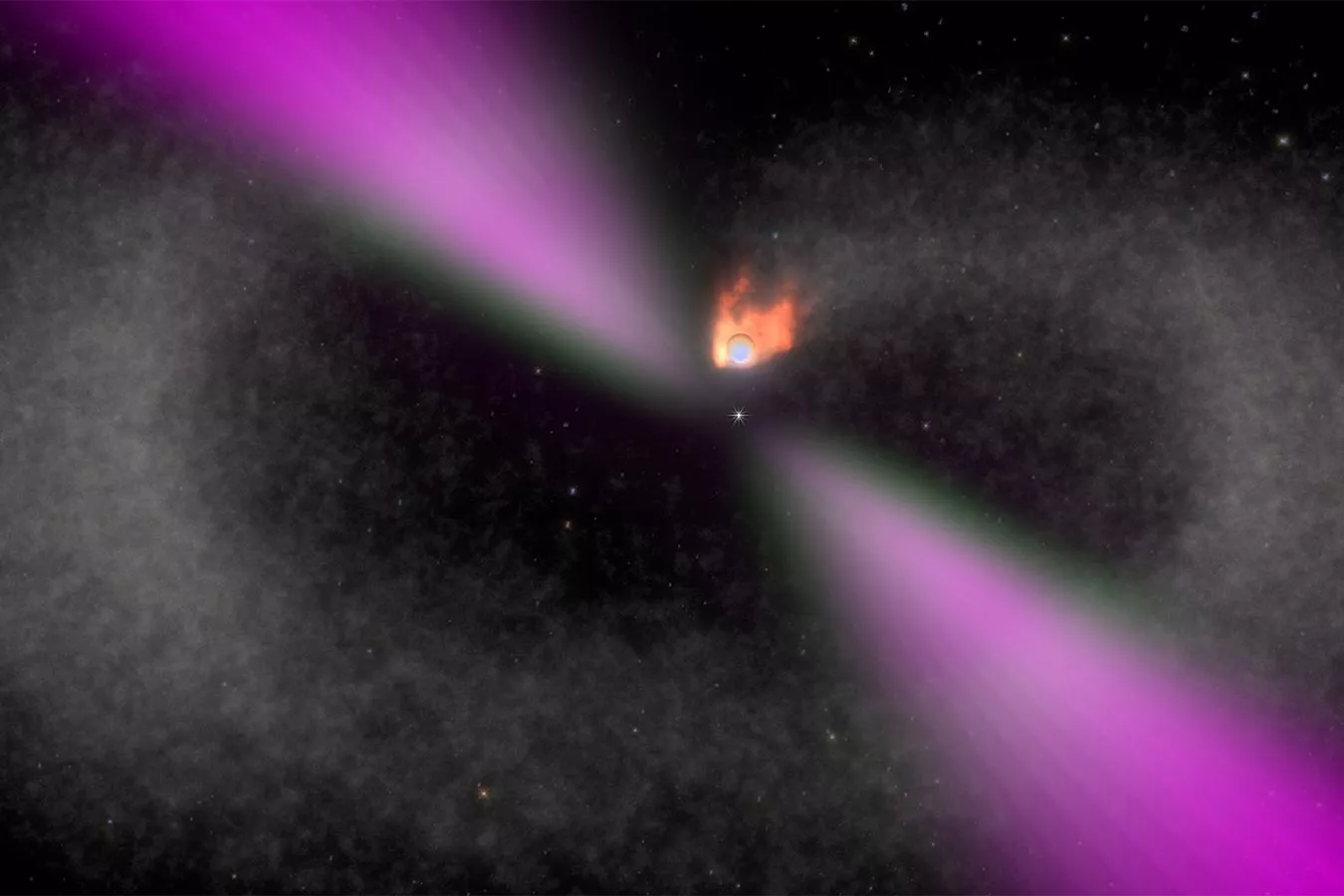The flash of a star caught the attention of a group of astronomers. It is part of a rare mysterious system. As they reported in a recent paper published in the journal Nature, this strange star seems to be a "black widow binary" - a system composed of rapidly rotating neutron stars or pulsars, which is circling and slowly devouring a smaller companion star, just as a female spider does to her partner after undergoing the courtship dance and mating.

The research team led by co-author Kevin bodega, a postdoctoral researcher at the Massachusetts Institute of technology, discovered the black widow binary by using the data from the zwicki transient facility, an observatory in California that is responsible for shooting wide area images of the night sky.
"This discovery highlights the potential of large-scale time-domain observations such as ztf in discovering rare objects," said co-author Eric Bellm, an assistant professor of astronomy at the University of Washington, a researcher at the Dirac Institute at the University of Washington, and a scientist at ztf and Vera C. Rubin Observatory in Chile.
Astronomers know that there are about twenty black widow binaries in the Milky way. This latest candidate system, named ztf j1406+1222, is located 3000 light-years away from the earth. It has the shortest orbital period found so far. Pulsars and companion stars rotate around each other every 62 minutes. The system is unique in that it seems to carry a third distant star, which will orbit two inner stars every 10000 years.
The "triple" black widow raised questions about how such a system came into being. Based on its observations, the team came up with an origin story. Like most black widow binaries, this triple system may come from a dense constellation of old stars called globular clusters. This particular cluster may have drifted to the center of the Milky Way galaxy, where the gravity of the central black hole pulled the cluster apart and left the complete triple black widow. This birth is very complicated, and the system may have been floating in the Milky way for longer than the sun.
Pulsars are the core of the collapse of massive stars. They are characterized by a frighteningly fast rotation cycle, rotating every few milliseconds, and emitting high-energy gamma rays and X-ray flashes in the process.
Usually, pulsars will rotate rapidly and die after burning a lot of energy. But occasionally, the gravity of a pulsar can pull matter from a passing wandering star and provide new energy to make the pulsar rotate again. Then the "recovered" pulsar began to radiate energy again, further stripped the star, and finally destroyed it.
Although most black widow binaries were discovered by gamma ray and X-ray radiation from the central pulsar, the research team detected ztf j1406+1222 by using the visible light from the twinkling companion stars of the binaries. Bodega realized that the so-called "day" side of the companion star, that is, the side always facing the pulsar, may be many times hotter than its "night" side, because it continuously receives high-energy radiation from the pulsar. He concluded that if astronomers observed a star with a large periodic change in brightness, it would be a strong signal that it was in a binary with a pulsar.
In order to test this theory, Bodega and his collaborators studied the brightness of stars in ztf data, and observed whether there were stars changing rapidly at a speed of more than 10 times, and the time scale was about 1 hour or less. The team was able to select a dozen known black widow binaries and verified the accuracy of the new method. Then they found a star whose brightness changed 13 times every 62 minutes, indicating that it might be part of a new black widow binary.
After decades of measurements of the star by the Sloan Digital Sky measurement system, they found evidence that the binary star was tracked by another distant star. According to their calculations, the third star seems to orbit the inner binary every 10000 years.
Strangely, astronomers have not directly detected the gamma or X-ray emission of pulsars in binary stars, which is a typical way to identify black widows. Therefore, at present, ztf j1406+1222 is considered as a candidate black widow binary star, and the team hopes to confirm it through future observations.
"Everything seems to point to it as a black widow binary," Bodega said But it has some strange things, so it may be a brand new thing. "
The team plans to continue to observe the new system and apply optical technology to illuminate more neutron stars and black widows in the sky. Just using ztf to identify the black widow binary shows that we should be able to find more such systems when the more powerful vera-c-rubin Observatory is launched in a few years.